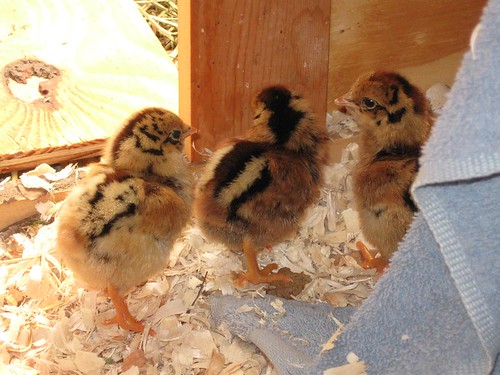
The Sunday before last we brought another heifer home. We picked this girl up from the same woman we bought our other two from. Turns out she still had the heifer I'd had my eye on last year but couldn't bring myself to choose as she was a tad more high strung than the ones we settled on. Since then Jeff has not only gotten used to having bovine around but has grown a real affection for them, in particular our "pet" Charlotte. I figured even if this new girl is a little livelier we'd be o.k.
The trip went fine, all be it long. The loading was uneventful, the trip home was equally uneventful. We made really good time getting back, everything was smooth. I tended to the dog, cat and chickens, making rounds to get everyone checked and fed and Jeff backed the trailer up to unload. Everything was set and I put our two heifers on the outside of the barnyard to keep everyone separated initially. Jeff asked if I was ready and I said "yep". Oops. I wasn't ready.
That heifer came shooting off the trailer in a streak. Hens went squawking and flying and the dog started barking. It seemed like time was moving in slow motion as my eyes started to note all the things that weren't quite right... should have shooed the hens out of the heifer's path, maybe should have run the other heifers up on top of the hill,
definitely should have spaced those boards closer together up in the corner of the barnyard... that last one was the thought I had as the new heifer stuck her head between the boards and pulled the rest of herself through after, busting down a board in the process. Worse yet, she proceeded to get bumped maybe all of once by one of the other heifers before deciding she hadn't gone far enough. She stepped through one set of electric wires and was off, climbing directly up the hill and leaping through two more sets of electric wires (which were VERY hot, as Jeff can attest to).
We spent a little over two very strained hours, mostly keeping her from making it all the way across the hill and onto the rest of the farm. At one point she barreled into the brush between the hill and the road - thank goodness she deemed that uncomfortable and came back up the hill. She made multiple attempts to run right at us, toward the open fields on the other side of the hill. If she'd made it, that would be another couple hours, at least. There are MANY more options for an animal to run on that side. I'm thankful 1) neither of us tripped at any critical moments running along to keep her from going further 2) that we'd made that bathroom stop on the way home 3) that the heifer was tired and panting and 4) for all the brush, trees and crazy terrain that probably prevented that heifer from running for MILES.
We finally coaxed her to turn back the way she came. Instead of going through the open gates and down the lane, she slipped back through the same electric wires she came through and back in with the other heifers, who, little wonders that they are, were hanging out in the same location. I got some grain and called the other girls into the barnyard and they ushered the "new girl" in with them and Jeff rushed up to close the gate behind.
WHEW.
After all that we barricaded the heck out of the barnyard - new boards where she broke through and cattle panels behind all the gates that looked like a head could fit through if forced. We checked her repeatedly until dark and barely slept that night.
Next day she was still there, which was all I was hoping for, and we went out to feed the critters in the morning. As Jeff was putting hay down in the pen for the heifers the chickens were, as usual, rummaging around in the barnyard for a morning snack of bugs and hay seeds. Our new heifer, dubbed "Ella" (though I had another name in mind after all that running...) was mesmerized by the chickens. The other heifers went about their morning business of eating but Ella was just standing there, eyes fixed on those funny little birds. Jeff suggested perhaps we should have taken a chicken up on the hill to bait her back when she escaped, or at least to hypnotize her, which is what it looked like the hens were doing. I guess I can see her fascination... come to think of it I probably had the same look on my face that first year we had birds. I suppose Jeff and I could both confess to still having that same hypnotized look every now and then when checking out the birds :)



